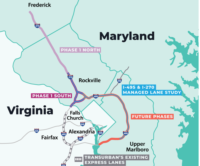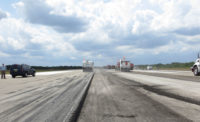The bridge opened to traffic the next morning. Conventional replacement would have required six more full night-time closures, according to UDOT.
More than 1,000 spectators watched the bridge move, including a delegation of Federal Highway Administration officials and several other state transportation officials. There is a lot of interest in this innovation, says Byron Lord, team leader with the FHWA's Highways for Life program. A Highways for Life $1-million grant allowed UDOT to perform its first SPMT bridge move in 2007.
They are building higher-quality, more durable products with almost no impact to the motoring public, he adds. FHWA strongly encourages DOTs to become aware of and understand the potential value of these new practices.
In general, the I-15 CORE project will add two lanes in each direction, 10 rebuilt interchanges, 63 new or rebuilt bridges and a pavement with a 40-year design life, says Tim Odell, PRC deputy project director. The biggest challenge has been and will be maintaining traffic, says Odell. We committed to maintaining one more lane in each direction than what was required.
During normal traffic hours, that means keeping four lanes open for half the alignment and three lines open for the other half. The team is doing so by building temporary lanes, which entails building a number of temporary bridges as well, Odell notes.
A fixed-price, best-design contracting method is a huge change for the design-build model, says Scott Risley, project director with PRC. It has benefits for the public and the DOT. However, it is extra challenging for the design-builder. You do enough design that you think you can reach, then estimate the dollars left, then do more design, says Risley. Despite the swift design period of only 14 months, we're not getting a a lot of field issues, he adds.
Despite the fast pace, constant night work, tight right-of-way and soft soils, the team has recorded more than 1 million man-hours with zero lost-time injuries, according to Odell. This year will see a peak of up to 1,800 workers on-site. As far as innovative feats, Sam White was the big one, says Bowden. The rest is just a lot of everything.



Post a comment to this article
Report Abusive Comment